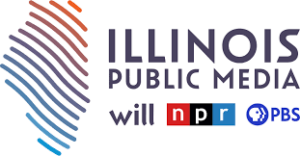NAB CEO Gordon Smith says the FCC's to-do list for this year should be topped with: successfully handling the spectrum auction and repack; encouraging innovation and diversity; and resisting the pay TV industry’s attempt to "further pad its wallets through unnecessary government intervention in retransmission consent negotiations."
Smith: Fate Of Broadcasting In FCC’s Hands
NAB President Gordon Smith called on the FCC today to give broadcasters more time to move to new channels following the incentive auction this spring, reconsider plans to set aside spectrum for unlicensed use and reject attempts by cable and satellite interests to write the retransmission consent rules.
Speaking at the FCC Commissioners’ Breakfast at the Multicultural Media, Telecom and Internet Council’s (MMTC) 7th Annual Broadband and Social Justice Summit, Smith said: “We’re just 20 days into the new year, but there is already little doubt that 2016 is going to be an incredibly important year for broadcasting.
“Following years of hard work by the dedicated staff at the Federal Communications Commission, we are poised to begin the broadcast spectrum incentive auction this spring. One measure of a successful auction will be whether the commission sets the stage for the broadcast industry not just to survive, but to thrive following the auction.
“This is important because of the value and contributions broadcasting makes every day to the American people. Because it is always available for free over-the-air, broadcasting plays a critical role for all Americans, especially those who are traditionally underserved.
“First, the FCC must ensure that viewers are not left behind. During the DTV transition, the FCC, NAB and an army of consumer, public interest and diversity-focused organizations locked arms to ensure that consumers were all afforded the opportunity to successfully transition to digital television.
“Early in the process, the FCC established a deadline of 39 months for all stations to move. At the end of this period, all stations are required to go dark on their old channels, regardless of whether or not they’ve been able to complete their moves.
“Setting a 39-month deadline without knowing the scope of a job is like asking your mechanic to tell you how long it will take to fix your car before he knows what he’s repairing. The FCC should instead commit to an expeditious timeline but establish the exact one right after the auction. This will help the FCC ensure a smooth transition for viewers and wireless consumers alike.
“Second, the FCC should be actively encouraging broadcaster innovation and investment while continuing to find new opportunities for diverse entrants. The FCC’s proposal to give away spectrum in the broadcast band to Microsoft and Google [for unlicensed devices] threatens that future.
“It throws up unnecessary impediments to any potential move to a next generation broadcast transmission standard. It will also deprive the most vulnerable Americans of free service by forcing many low power and translator stations off the air. And it will upend the FCC’s traditional diversity goals by closing off opportunities for new entrants, and disproportionately displacing minority and women-owned stations.
“Third, the FCC must resist the pay TV industry’s attempt to further pad its wallets through unnecessary government intervention in retransmission consent negotiations. The pay TV industry’s goal is obvious — as former monopolists, these companies would rather not pay for something they once got for free.
“They have no plans to pass along any savings to consumers, reduce equipment fees or make bills comprehensible. The best way for the FCC to reduce the already low number of actual service disruptions resulting from retransmission consent impasses is to close its proceeding promptly to make clear that cable and satellite bargaining should be with broadcasters, not the federal government.
“The giants of the pay TV industry should not be rewarded for creating selective impasses to pad their claims of a problem with retransmission consent.
“Similarly, the cable industry’s push to eliminate the FCC’s non-intrusive program exclusivity rules should be rejected. These rules help encourage and ensure robust local broadcasting service.
“At the end of the day,” Smith concluded, “the commission will need to ask itself whether it really wants television to be available only to those who can afford expensive cable or satellite service. Or do we want to allow a free, over-the-air option to thrive, grow and innovate – to complement wireless broadband and provide meaningful competition in the marketplace?
“Broadcasters are excited about our industry’s future. We hope the FCC is, too.”
































Comments (1)
Gregg Palermo says:
January 21, 2016 at 4:53 pm
If cable or satellite was “expensive” for users, you’d see an adoption rate lower than 92 percent, which is roughly the cable/satellite penetration rate. Devoting more than one or two stations per market is wasteful, given how few homes use OTA signals.